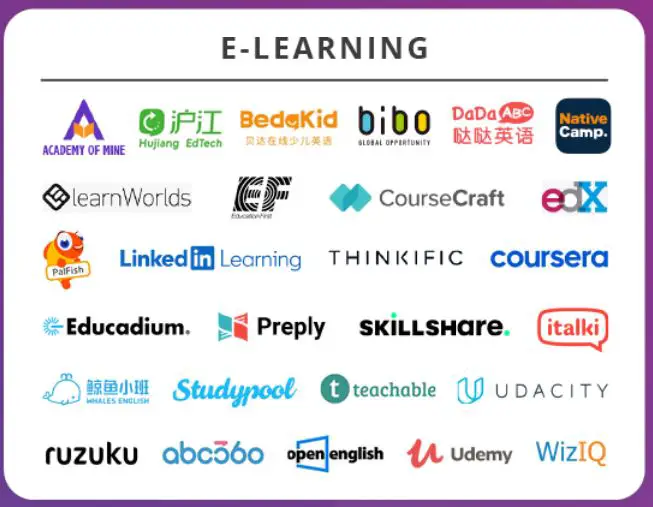Impact of CDN on E-learning Platforms and Online Courses

Improved Content Delivery:

- CDNs (Content Delivery Networks) optimize content distribution by hosting copies of files in various geographical locations.
- This reduces latency and improves download speeds, ensuring smooth streaming and fast access to educational content.
Enhanced Video Quality:

- With CDNs, video content is delivered from nearby servers, minimizing buffering and providing high-quality streaming.
- Students can access videos with minimal interruptions, improving their learning experience.
Reduced Network Load:
- CDNs cache popular content locally, reducing the load on the origin server and improving overall network performance.
- This ensures that the platform remains accessible even during peak traffic times.
Improved Global Reach:
- CDNs have a global presence, enabling e-learning platforms to reach a wide audience beyond geographical boundaries.
- Students from different countries can access courses with localized content and in their preferred language.
Cost-Effective Distribution:
- CDNs offer pay-as-you-go pricing models, allowing e-learning platforms to scale their content delivery based on demand.
- This helps optimize costs and ensure affordability for both providers and students.
Increased Accessibility:
- CDNs provide reliable access to content, even in areas with limited internet connectivity.
- Students can access learning materials offline or in low-bandwidth environments, enabling them to continue their studies regardless of their location.
Data Analytics:
- CDNs provide valuable insights into content usage, traffic patterns, and user behavior.
- E-learning platforms can use this data to optimize content delivery, personalize learning experiences, and improve overall platform performance.
Scalability and Reliability:
- CDNs provide scalable infrastructure that can handle large spikes in traffic, ensuring uninterrupted delivery of educational content.
- They also offer high uptime and resilience, minimizing downtime and maintaining platform stability.
Increased Engagement:
- By improving content delivery and user experience, CDNs contribute to increased student engagement.
- Smooth streaming and quick access to content make learning more enjoyable and productive.
Examples:
- Udemy uses Akamai CDN to deliver its video courses worldwide with high quality and reduced buffering.
- Coursera leverages Amazon CloudFront CDN to ensure fast and reliable access to its online courses for students in various countries.
- LinkedIn Learning partners with Azure CDN to optimize content delivery and enhance the online learning experience for its users.## The Impact Of CDN On E-learning Platforms And Online Courses
Executive Summary
With the increasing demand for online education, E-learning platforms and online courses have become increasingly popular. However, delivering high-quality video content to a large number of users can be challenging, especially during peak hours. A CDN (Content Delivery Network) can help solve this problem by caching content on servers located closer to users, which reduces latency and improves the overall user experience. This article explores the benefits of using a CDN for E-learning platforms and online courses, and provides practical guidance on how to implement a CDN into your online learning environment.
Introduction
E-learning has become a popular way to deliver education and training, offering flexibility and convenience to learners around the world. However, delivering high-quality video content to a large number of users can be challenging, especially during peak hours. A CDN can help solve this problem by caching content on servers located closer to users, which reduces latency and improves the overall user experience.
FAQ
1. What is a CDN and how does it work?
A CDN is a network of servers that are distributed across multiple geographic locations. When a user requests content from a website or online course, the CDN will deliver the content from the server that is closest to the user. This reduces latency and improves the overall user experience.
2. What are the benefits of using a CDN for E-learning platforms and online courses?
There are numerous benefits to using a CDN for E-learning platforms and online courses, including:
- Improved video quality: A CDN can help to improve the video quality of your online courses by reducing latency and buffering.
- Increased reach: A CDN can help to increase the reach of your online courses by making them available to a wider global audience.
- Reduced costs: A CDN can help to reduce the costs of delivering your online courses by reducing bandwidth usage.
3. How do I implement a CDN into my online learning environment?
Implementing a CDN into your online learning environment is a relatively simple process. There are a number of CDN providers that offer services that are specifically designed for E-learning platforms and online courses.
Subtopics
1. Improved Video Quality
One of the most important benefits of using a CDN for E-learning platforms and online courses is that it can help to improve the video quality. A CDN can reduce latency and buffering, which can lead to a smoother, more enjoyable learning experience for students.
- Reduced latency: A CDN can help to reduce latency by caching content on servers that are located closer to users. This means that users will experience less delay when loading videos.
- Reduced buffering: A CDN can help to reduce buffering by storing copies of videos on multiple servers. This means that if one server is experiencing high traffic, users can still access the video from another server.
- Improved bitrate: A CDN can help to improve the bitrate of videos by delivering them in a format that is optimized for the user’s internet connection. This means that users will be able to watch videos in higher quality without experiencing buffering.
- Adaptive bitrate streaming: A CDN can help to deliver videos in an adaptive bitrate format. This means that the video quality will be automatically adjusted based on the user’s internet connection.
2. Increased Reach
Another benefit of using a CDN for E-learning platforms and online courses is that it can help to increase the reach of your content. A CDN can deliver your content to users all over the world, regardless of their location.
- Global reach: A CDN can help you to reach a global audience for your online courses. By caching content on servers in multiple geographic locations, you can ensure that users from all over the world can access your content quickly and easily.
- Increased accessibility: A CDN can help to make your online courses more accessible to users with slow internet connections. By caching content on servers that are located closer to users, you can reduce latency and improve the overall user experience.
- Improved SEO: A CDN can help to improve the SEO of your online courses. By delivering content quickly and efficiently, you can help to improve your website’s ranking in search results.
3. Reduced Costs
A CDN can also help to reduce the costs of delivering your online courses. By reducing latency and buffering, a CDN can help to reduce bandwidth usage. This can lead to significant savings on your bandwidth costs.
- Bandwidth optimization: A CDN can help to optimize your bandwidth usage by caching content on servers that are located closer to users. This means that you will use less bandwidth to deliver your content, which can lead to significant cost savings.
- Reduced infrastructure costs: A CDN can help to reduce your infrastructure costs by eliminating the need to purchase and maintain your own servers. By using a CDN, you can simply pay for the bandwidth that you use.
- Improved scalability: A CDN can help to improve the scalability of your online courses. By caching content on multiple servers, you can ensure that your courses will be able to handle a large number of users without experiencing performance issues.
4. Improved Security
A CDN can also help to improve the security of your online courses. By caching content on multiple servers, you can reduce the risk of your content being hacked or stolen.
- Increased redundancy: A CDN can help to increase the redundancy of your content. By storing copies of your content on multiple servers, you can ensure that your content will still be available even if one of your servers fails.
- Improved DDoS protection: A CDN can help to protect your online courses from DDoS attacks. By caching content on multiple servers, you can make it more difficult for attackers to take down your website.
- SSL encryption: A CDN can help to protect your content from eavesdropping by encrypting it with SSL. This ensures that your content will be safe from hackers and other unauthorized users.
5. Enhanced User Experience
Overall, using a CDN for your E-learning platform or online courses can significantly enhance the user experience. By improving video quality, increasing reach, and reducing costs, a CDN can help you to create a more engaging and effective learning environment for your students.
Conclusion
In conclusion, using a CDN for E-learning platforms and online courses offers a range of benefits that can help to improve the overall user experience. By reducing latency, improving video quality, increasing reach, and reducing costs, a CDN can help you to create a more engaging and effective learning environment for your students. If you are looking to improve the performance of your online courses, I highly recommend considering using a CDN.
Keyword Tags
- CDN
- E-learning
- Online courses
- Video quality
- Reach
- Costs
